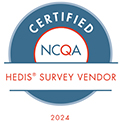To assist patients with End Stage Renal Disease (ESRD), dialysis facilities, transplant centers, care providers, and stakeholders in achieving alignment with CMS priorities, the HSAG ESRD Networks and the ESRD National Coordinating Center (NCC) are providing the below educational resources, webinars and tools to promote Health Equity. We are committed to addressing health care disparities and working towards achieving optimal health outcomes for all.
Centers for Medicare & Medicaid Services (CMS) defines Health Equity as the attainment of the highest level of health for all people, where everyone has a fair and just opportunity to attain their optimal health regardless of race, ethnicity, disability, sexual orientation, gender identity, socioeconomic status, geography, preferred language, or other factors that affect access to care and health outcomes. To learn more on CMS’s Health Equity Pillar visit www.cms.gov/pillar/health-equity.
- Health Literacy Tip Sheet—This handout is designed to assist dialysis facility staff in communicating more effectively with patients with low health literacy.
- Understanding Health Equity (esrdncc.org)—This handout explains common terms when discussing health equity.
- Understanding Health Equity (Spanish) (esrdncc.org)
- A Change Package To Improve Health Equity (esrdncc.org)—Includes actionable change ideas, collected from dialysis facilities that performed above the national average for patients moving to a home modality or placed on a transplant waitlist, despite their patients’ residing in the most disadvantaged neighborhoods and having complex health-related social needs. The change ideas are intended as a menu of interventions from which leaders can choose to implement within their facilities.
- Think Cultural Health (hhs.gov)—Sponsored by the Office of Minority Health and features information, continuing education opportunities, resources, and more for health and health care professionals to learn about culturally and linguistically appropriate services, or CLAS.
- Advancing Equity at HHS (hhs.gov)—HHS is working to shift the culture, resources, and approaches to institutionalize and sustain a focus on equity over time.
- Paving the Road to Health Equity (OHE-CDC)—The Office of Health Equity exists to ensure health equity is embedded in an all-of public health approach to overcoming persistent health disparities and health inequities across a range of population groups that disproportionately experience poor health outcomes.
- Looking at Quality Improvement Through a Health Equity Lens Worksheet (fillable PDF)—Looking at quality improvement activities through a health equity lens helps us identify health-related social needs (HRSN). HRSNs are individual-level adverse social conditions that negatively affect an individual’s health or healthcare. This worksheet can assist the facility with addressing health-related social needs for a specific patient and social determinants of health when addressing the needs of diverse populations of people at the dialysis facility level.
- Looking at Quality Improvement Through a Health Equity Lens Worksheet (Word)—Same document as provided above, but in Word format.
- Video recorded presentation explaining how to implement the Looking at Quality Improvement Through a Health Equity Lens Worksheet
- PowerPoint presentation for completing the Looking at Quality Improvement Through a Health Equity Lens Worksheet
- Transportation Tip Sheet and Decision Tree—This resource can be used to discuss transportation options with patients.
- Food Insecurity—This handout can be used to discuss food resources with patients.
- Root Cause Analysis: 5 Whys Tool
- PDSA Tool
We all need to be able to find, understand, and use health information and services to make informed decisions about our healthcare. CLAS Standards were developed by the U.S. Department of Health and Human Services’ Office of Minority Health to improve the quality of services provided to all individuals and works to reduce health disparities in order to achieve health equity. The National Standards for CLAS are a set of 15 action steps intended to advance health equity, improve quality, and help eliminate health care disparities by providing a blueprint for individuals and organizations to implement CLAS. The following resources are intended to assist dialysis and transplant teams with providing culturally and linguistically appropriate services.
- CLAS Implementation Action Plan April 2024 (PDF)—The ESRD National Coordinating Center's (NCC's) Action Plan is a guide for healthcare organizations in the kidney community to implement the National CLAS Standards.
- CLAS Standards Implementation Action Plan One-Pager (PDF)
- National CLAS Standards (English) (hhs.gov)
- National CLAS Standards (Spanish) (hhs.gov)
- Providing CLAS (hhs.gov)
- CLAS Up Your Dialysis Facility (PDF)
- CLAS Crisis Communication (hhs.gov)
- Health Literacy Factsheet (esrdncc.org)
- Why culturally and linguistically appropriate services (CLAS) matter (YouTube)—Hear from fellow CLAS champions about why CLAS services matter
- Preparing for the End-Stage Renal Disease (ESRD) Quality Incentive Program (QIP) Facility Commitment to Health Equity Reporting Measure
- Part 1 Slide deck | Webinar recording
- Preparing for the ESRD QIP Screening for Social Drivers of Health Reporting Measures
- Part 2 Slide deck | Webinar recording
- Webinar: Breaking Barriers—Strategies to Advance Health Equity at Dialysis Facilities
- Explains approaches to identify patients with social needs.
- Describes methods to address patients’ social needs.
- Discusses how to implement strategies to advance health equity in your dialysis facility.
- PowerPoint Presentation
ESRD Networks Home
- About Us
- Contact Us
- For Patients and Families
- For Providers
- Community Resources and Events
- ESRD Network 7
- ESRD Network 13
- ESRD Network 15
- ESRD Network 17
- ESRD Network 18
- Behavioral Health
- Continuing Education
- Data Management
- Dialysis in Nursing Homes
- Emergency Preparedness
- Health Equity and CLAS
- Home Dialysis
- Patient and Family Engagement (PFE)
- Hospitalizations and Emergency Department (ED) Visits
- Telemedicine
- Transplant
- Vaccinations


